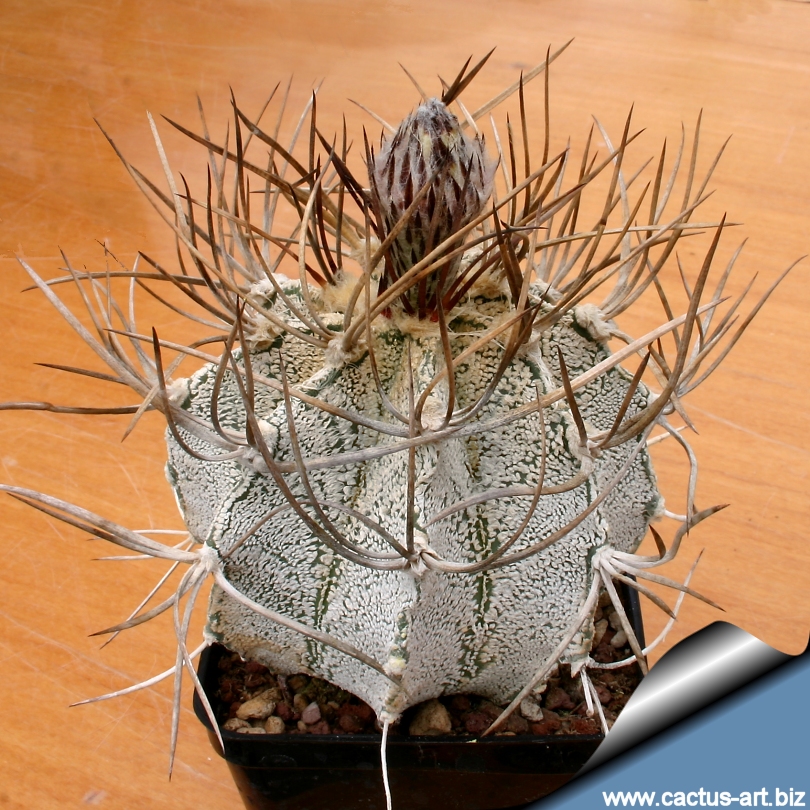|

Astrophytum capricorne var. niveum is a
variety with striking rigid thorns and very more closely whiter
flocking, it is indubitably one of the more
beautiful of the
astrophytums
Description:
Astrophytum capricorne v. niveum is
bigger than var. senilis and aureum, and its dimension are
similar to the standard species.
Stem: Robust, at first globular then
cylindrical up to 50 cm tall, diameter up to 20 cm (this size correspond
in habitat to a 50 years old plant). The epidermis is densely covered
with
white flecks that give the plant a furry look. The hairy scales are
pure white also in the new growth, while in the type species the new
flecks are initially brownish and turn into white only lately.
Spines: 6-8 per areole, striking strong
of variable size (max. 7-9 cm long)
flat, bent upward and not very wavy.
Brownish-blackish that turn grey-chalky as
they age. Nice
yellow
and white
spined forms are also
common in cultivation.
Flower: Medium sized, 7 cm (max. 9 cm) yellow with a red or
orange throat.
Fruit: Fruit and seeds are identical to
the standard species.
Astrophytum capricorne and its
varieties are very variable in their habit even in small areas. And it
is understandable that today we often have problems to decide to which
population plants belong
Astrophytum capricorne var.
niveum form nudum (Syn:
Astrophytum capricorne var. crassispinum)
Recently (1985-1986) a curious A. niveum without the
typical white flecks covering was fuond at about
10 kilometers on the west of Cuatro Cinegas. This ‘nudum’
form grows in association with normal white flecked specimens. This
plant caused many confusions among botanists and collectors because
it has been also indicated with a
different name
Astrophytum capricorne var. crassispinum. Cultivation: Although
regarded as a choice and difficult plant in cultivation it is relatively
easy to grow. Use mineral well permeable substratum (rot prone). Water
sparingly from March till October and keep
perfectly dry in winter at temperatures from 5 to 15 degrees
centigrade. (but it is Hardy to -7°C
for short periods) In the rest period no high
atmospheric humidity!!
Sun Exposure: Light shade to full sun.
Photo of conspecific
taxa, varieties, forms and
cultivars of Astrophytum capricorne:
|